It may come as little surprise to those in the meat and poultry industries, but barbecue, and everything that goes with it, is hot right now, with no signs of cooling off.
In the past year, low-and-slow-cooked barbecue such as brisket, pork shoulder and pork ribs along with pulled pork and beef have been trending in restaurants, even appearing in fast-casual barbecue concepts, according to the 2017 Center of the Plate: Beef and Pork Consumer Trend Report from Technomic, a Winsight Company, in Chicago. Barbecue ranked second for the perennial favorites of the 700 professional chefs surveyed for the National Restaurant Association’s What’s Hot 2018 Culinary Forecast. More than a quarter of these chefs (27 percent) even labeled barbecue a hot trend.
It’s not surprising then that barbecue is mentioned on 40 percent of all pork dishes at restaurants, according to Datassential. In addition, 13 percent of all pork entrées involve smoked pork. For beef, brisket is currently on 12 percent of restaurant menus and has grown 30 percent on menus since 2013, Datassential reports. Barbecue is also a top term in beef dishes, with barbecue representation on 22 percent of all restaurant beef dishes, the research firm says.
Slow-cooked barbecue for breakfast, such as a breakfast brisket bagel sandwich, is even trending in foodservice. In addition, Technomic reports beef and pork ribs grew on leading restaurant menus during the past two years, speaking to low-and-slow barbecue trend. Barbecued pork was on the rise at fast-casual and casual-dining restaurants as well.
One trend of interest among barbecue restaurants is the total number of flavors on the menu is on the rise, recording a 28 percent increase in menu mentions from the fourth quarter of 2015 to the fourth quarter of 2017, according to Mintel Menu Insights (MMI). Smoked flavor, specifically, increased 16 percent during that time period, and that trend is being seen across all types of barbecue. For example, during summer 2017, Chick-fil-A released the Smokehouse BBQ Bacon Sandwich which featured a Smokehouse BBQ sauce.
“The increase in flavors demonstrates that across the board barbecue, which is a very traditional food, is currently experiencing a creative moment across foodservice segments, with chefs blurring the lines of regionalism, international inspiration playing a stronger role and innovation blending with tradition,” says Diana Kelter, foodservice analyst at Mintel International, in Chicago.
A few examples of unique takes on barbecue include Pflugerville, Texas-based Black Iron BBQ’s Texas Cuban Sandwich and a Brisket Kimchi Banh Mi along with Smoked Lamb Ribs offered at Charcoal Venice, in Venice, Calif. The Mike Johnson Sandwich at Slap’s BBQ in Kansas City, Mo., also offers a No Cow Combo, which includes a choice of smoked turkey, jalapeno cheddar sausage, chicken leg quarter or pulled pork.
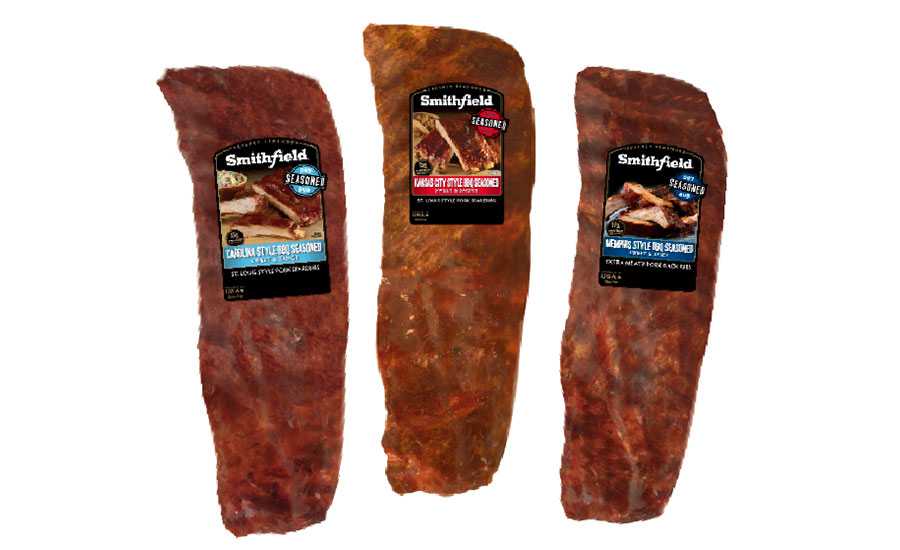
According to MMI, barbecue as a restaurant cuisine type has increased 8 percent from fourth quarter of 2015 to the fourth quarter of 2017, and casual dining remains the leading restaurant segment for barbecue cuisine with 14 percent growth during that time period, followed by the fast-casual segment which noted 3 percent growth during the same time period. However, barbecue as a flavor, across different restaurant types, has posted a 12 percent decrease during the same timeframe demonstrating that barbecue is becoming more common as a restaurant focus, MMI reports.
Kelter believes the fast-casual segment will likely continue to see an increase in barbecue with more restaurants leaning into counter-service restaurants that still offer the experience of a full-service restaurant.
According to MMI, barbecue combinations as a menu item dish have increased 16 percent in menu incidence from fourth quarter of 2015 to the fourth quarter of 2017, and this trend will likely continue to resonate by allowing diners to taste a little bit of everything, Kelter says. Ribs and poultry are the next most common type of barbecue meat on menus, MMI says.
While few dramatic shifts are occurring in the type of meat being used for barbecue, flavor details are changing and being expressed on menus. Sweet as a barbecue flavor has declined 8 percent in menu mentions from fourth quarter of 2015 to the fourth quarter of 2017, but spicy has increased 22 percent during the same time period and tangy increased 7 percent, MMI reports. Chipotle pepper is a specific ingredient/flavor noting strong growth and increased 79 percent in menu incidence during the time period, MMI says. For example, TGI Friday’s offers a BBQ Chicken Flatbread, featuring a pulled all-natural chicken breast in a chipotle barbecue sauce.
Some like it hot
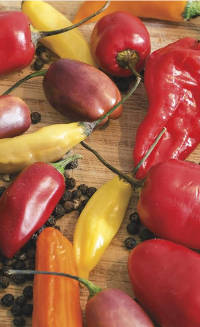
In meat dishes, heat has been trending hot. On beef and pork dishes, extremely spicy ghost pepper, sweet-spicy Korean chili paste gochujang, sriracha, Southern Italian Calabrian chili pepper and Northern African harissa are among the fastest-growing terms, Chicago-based Datassential reports.
Smithfield Foods also reports hot and spicy flavors are outpacing other profiles when purchasing or eating international flavors. “Hot and spicy flavor profiles over index with some key growing demographics: millennials, Hispanics and Asians,” says Emily Detwiler, the company’s director of fresh pork marketing.
Diana Kelter, foodservice analyst for Mintel International, sees more barbecue menu offerings pushing the limits on flavor with jalapeno pepper noting strong directional growth as a flavor, as well as sweet chili showing strong growth as a flavor.
“Complex flavor combinations that provide a sweet heat combo or a smoky sweet combo will continue to drive more innovation in the category,” Kelter says.
Kelter also expects international influences will continue to play a role, especially with the rise in Korean barbecue, which is noting directional growth in Mintel Menu Insights, and the influences Asian flavors are having toward sauces as a whole.
“From a regional perspective, it’s expected that more restaurants will start to merge together the different regional influences, while legacy barbecue establishments will remain rooted in that sense of tradition,” Kelter says.
Regional barbecue varieties also are still very niche on restaurant menus. Carolina barbecue is on about 0.6 percent of all restaurant menus, and Memphis and Kansas City barbecue are on only a handful of menus, Datassential reports. MMI tracks St. Louis-style as the leading regional barbecue claim, followed by Memphis but both are declining.
“This is interesting for barbecue because regional barbecue influences are deeply rooted in this type of cuisine and goes beyond simply being highlighted on the menu, which can be the case for other regional dishes that are less complex,” Kelter says. “Regional barbecue reflects the preparation style, type of meat and overall theme of the restaurant. While those regional influences are not always being directly identified on menus, especially in the core barbecue regions where the style is inherently inferred, they are still playing an important role in barbecue trends. From a mainstream perspective, we are seeing more barbecue dishes that fuse together the different regional styles.”
In January, for example, KFC released a limited-time offering called the Smoky BBQ fried chicken. The dish is described as blending recipes from Memphis and the Carolinas. The new dish is being tested in Indianapolis and based on its popularity will be released on a national level. This limited-time offer from KFC follows other successful regional limited-time menu items that included Nashville Hot Fried Chicken and Georgia Gold Honey Mustard BBQ Chicken, but this is the first limited-time product that specifically highlights a blend of regional influences, Kelter says.
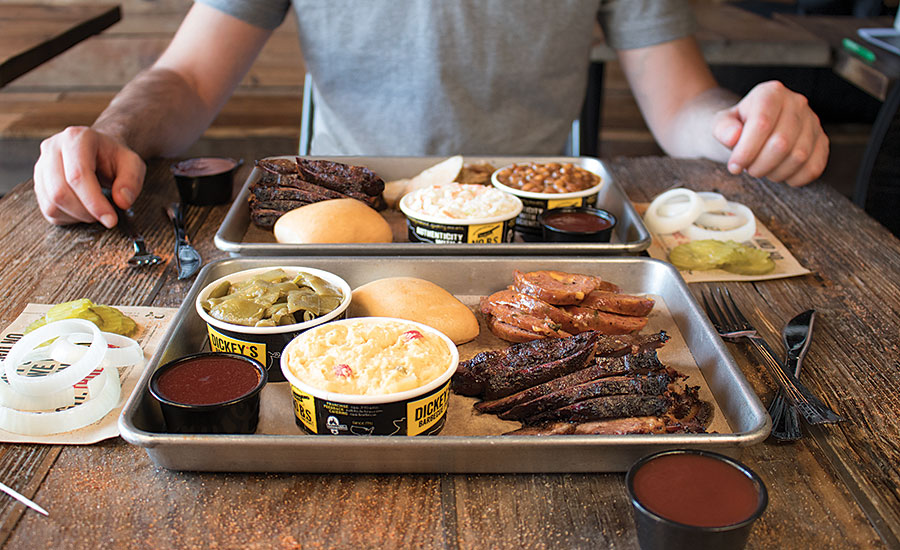
With more than 550 locations serving Texas-style barbecue across the nation, Dickey’s Barbecue Restaurants’ guests look for authenticity of products as well as convenience, which is something Roland Dickey, Jr., CEO of Dickey’s Capital Group, sees continuously growing. The chain’s beef brisket and pulled pork meat plates are top dishes.
“Barbecue lovers expect sustainable, high-quality meats to be prepared in only the best way,” he explains. “Because of this, pitmasters are constantly bringing their talents to the next level to provide only the best for their guests while maintaining the integrity of the product through pit smoking. As for convenience, we are living in an on-demand world where some guests base their decision making on what is the easiest meal to get.”
Dickey also finds barbecue lovers are more educated today than ever on what makes barbecue great.
“Guests look for sustainably raised meats that have that delicious smoky flavor that can only be achieved with the highest quality meat smoking overnight,” he says. “While we enjoy creating innovative twists on classic favorites to appeal to the novelty of an audience, quality and craftsmanship will always be the staple of the barbecue lover’s palate.
Barbecue + retail = convenience
At retail, consumers’ fervent search for new and exotic flavors and ethnic pork dishes are recent trends in the barbecue category.
“These trends are driving brands to explore all-natural ingredients, flavorful rubs and regional sauce profiles to wow and delight existing category purchasers and attract new users to the pre-cooked barbecue category,” says Robert Gay, vice president of marketing at Carl Buddig and Co., in Homewood, Ill. “Additionally, with less leisure time, consumers are purchasing products to help make their lives easier. In particular, products that offer heat-and-eat convenience. Our new line of Kingsford barbecue ribs is ready-to-eat in less than 15 minutes. The Kingsford ribs are packaged in a proprietary pan that works on the grill or in the oven.”
Last year, Buddig reached a multiyear agreement to produce Kingsford branded pre-cooked ribs and barbecue entrées. All 14 items in the line are gluten free, made with all-natural ingredients and are naturally smoked. “The entire line is slow-cooked and smoked over hardwood to create an authentic barbecue taste,” Gay says.
This year, Gay sees interest in ethnic pork dishes continuing to increase, especially among millennial consumers. “Carnitas, an $8 million-plus segment in the barbecue entrée category, continues to trend in the positive direction,” he says.
Eric Jacobson, brand manager for Hormel Foods Corp.’s Lloyd’s Barbecue Co., sees consumers continuing to be very passionate about barbecue.
“From everyday pulled meats to the special occasion ribs and special meats, consumers love barbecue,” he says. “Fully cooked barbecue products are a popular protein option for consumers as they are quick and easy to prepare.”
Lloyd’s recently released Baby Back Ribs with Kansas City-style sauce. The brand worked with the Culinary Institute of America to help define the characteristics of Kansas City-style sauce, Jacobson says.
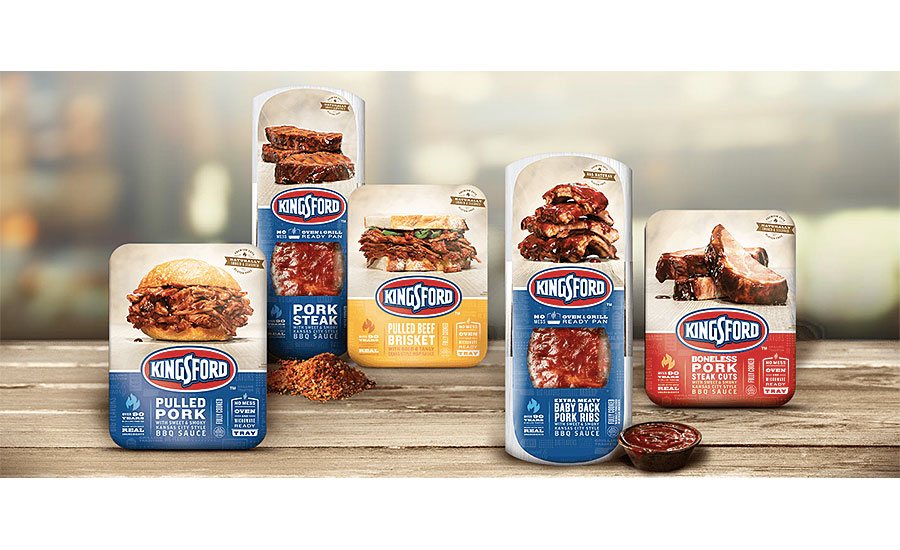
“Our product development people spent a lot of time coming up with a sauce profile that delivers on all the main characteristics: thick tomato base to cling to the meat, sweetened with molasses and brown sugar and a balance of sweet and spiciness,” he explains. Although fully cooked ribs are not a frequent consumer purchase, Jacobson feels the new Lloyd’s Baby Back Rib with Kansas City style sauce will provide a new opportunity and reason for consumers to prepare and enjoy barbecue ribs throughout the year.
Emily Detwiler, director of fresh pork marketing for Smithfield Foods, emphasizes the trend of grilling that has become a year-round activity for Americans. Also, while 50 percent of U.S. households are singles, they are still looking for convenient, flavorful dinner solutions in packaging sizes that are more conducive to them.
“Consumers are looking for versatile cuts and proteins that can be grilled quickly for an easy, weeknight meal like fresh pork loin filets and chops, which can be grilled whole or sliced or cubed for an even faster cooking time,” Detwiler says. “Consumers are also seeking flavorful, tender protein options when grilling. Smithfield is encouraging them to shake up their grilling routines by swapping traditional beef and chicken recipes for the versatility and flavor of fresh pork cuts on the grill.”
Smithfield continues to see tremendous growth in St. Louis-style pork ribs and bone-in butts, as consumers look to pitmasters for inspiration on how to leverage smoke and fire to develop delicious food on the grill.
“Recently, we’ve seen a great fusion of traditional, regional barbecue styles with different ethnic cuisines, making the barbecue industry a melting pot of flavors,” Detwiler says.
To cut down on cook time, Smithfield recently launched a line of Dry-Seasoned Pork Chops that are grill ready and available in four flavors: Hickory Smoked Brown Sugar; Roasted Garlic and Herb; Original Recipe; and Steakhouse Seasoned. The company also has a line of Smithfield Dry Seasoned Ribs, which are available in full racks and half racks. Flavors include Carolina-, Memphis- and Kansas City-style barbecue.
In addition to products that are versatile, quick and convenient, Detwiler says the barbecue competition circuit is a fast-growing industry; therefore, consumers are becoming more familiar with competition barbecue cuts, such as pork butts/shoulders and pork ribs. Smithfield expects growth in that category. Detwiler says the company has seen a strong rise in performance among key barbecue cuts, which are growing 10 times faster than the entire fresh meat category, up 2.3 percent in dollars sales over the year prior, according to Nielsen Perishables Group for the 52 weeks ending Nov. 25, 2017, for total U.S. barbecue cuts (beef, brisket, pork shoulder butt, chicken thighs and pork ribs).
“Smithfield is a proud investor in the sport of competition barbecue, and we recently announced the 50-plus contest winners of our second annual Smokin’ With Smithfield grant program, in which we deepen the prize pool in all major meat categories for cook teams and provide event support to sanctioned barbecue competitions,” Detwiler says. “This year, the number of applicants and grants awarded nearly doubled versus 2017.”
Smithfield also sponsors approximately a dozen major barbecue competitions across the country and in 2017 launched its own competition called the Smithfield BBQ Classic. “Over 500 barbecue teams have committed to cook with Smithfield Fresh Pork on the competition circuit,” Detwiler says.
Smithfield also works with more than a dozen of the top championship pitmasters in the country, leveraging their expertise to inspire backyard barbecues on the versatility and flavor of grilling with fresh pork. NP
Innovating a traditional favorite
One key area of innovation for barbecue is that more barbecue restaurants are leveraging different preparation methods and highlighting those details on the menu. Preparation methods in barbecue-based restaurants have increased 9 percent in menu mentions from fourth quarter of 2015 to the fourth quarter of 2017, Mintel Menu Insight reports. Slow-smoked preparation has increased 11 percent, and slowly cooked as a prep method has noted triple-digit growth, demonstrating that slow-cooking methods are a key area of focus, says Diana Kelter, foodservice analyst at Mintel International.
Technomic, a Winsight Company, expects to see a proliferation of underused beef and pork cuts, such as shin, leg and collar, cooked in the low-and-slow style. Ethnic pork renditions such as Korean barbecue tacos and pork char siu also are expected to grow, it says.
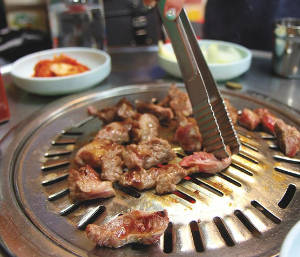
A growing interest in sustainability also is leading to using the whole carcass, says Mark Lambert, president of the National Barbecue and Grilling Association, in Naperville, Ill.
“High-end chefs are really paying attention to utilizing the entire animal, and by that you wind up with a lot more processed meat,” he explains. “Of course, those processed meats are done in house a lot of times because it gives the chef more of a blank canvas to personalize a signature dish whether it be pâtés, terrines, sausages or leberkäse. Chefs want more opportunity to put their own stamp on things, so I would say less of a trend toward pre-seasoned and in typical industry cuts and more trends toward more interesting and whole-carcass utilization.”
In addition, Lambert sees a resurgence of chefs who are really taking craft barbecue to heart and working more with the whole animal.
“You’re seeing a lot more of craft barbecue where people are actually cooking on old-school-style pits and using that as an experience for their customers rather than just providing a product that comes from a back room where you have no idea what happened to it,” he explains. “Those consumers have no experience with their food. They have no sight. They have no smell. They have no experience to put with the flavor. A lot of these pitmasters and chefs are actually moving these grills and smokers and roasters out to the forefront to where the customers can get a true experience with the meal rather than just food on the plate. It’s an experience. If you have some experience with your food, it just makes it taste better and it’s more memorable.”
The trend toward being transparent with the barbecue experience also speaks to innovating for health-conscious consumers. Because of consumer demands for healthier choices, Technomic predicts barbecue bowls will continue to grow and will appeal to more health-conscious consumers, positioned as power bowls and salads, with proteins served on rice, grains and greens. Bowls and salads also will feature a variety of barbecued meats, from brisket to pulled pork, carnitas and barbacoa. These items will be positioned as healthy, protein-rich meal options packed with flavor, the research firm reports.
“Guests’ diets and need for convenience will move the needle on barbecued meat and poultry dishes now and in the future,” says Roland Dickey, Jr., CEO of Dickey’s Capital Group, Dallas. “High-protein, low-carb diets are a trend right now that put barbecued meats in high demand and offering those in a way to bring them directly to the guests will only grow sales.”
While the core of Winston-Salem, N.C.,-based Red Hot and Blue Restaurants’ core offerings are Memphis-style hickory-smoked meats including ribs, pulled pork, smoked chicken, beef brisket and smoked-sausage cooked slowly at low temperatures, the chain recently added brisket ends along with build-your-own salads to cater to the younger more health-conscious generation. Guests may pick their greens and any meat they want on their salads.
“It’s going to be a lighter fare — not as heavy with the pork and beef,” says Sonny McKnight, Red Hot and Blue’s pitmaster of 30 years. “We are trying to come up with new items to offer the younger generation.”



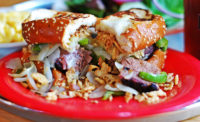
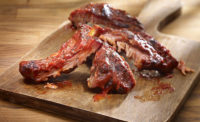
Report Abusive Comment